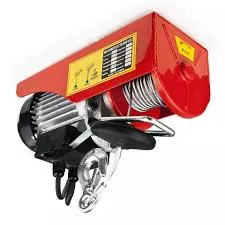


Understanding Industrial Fall Protection A Critical Safety Measure
In various sectors of industry, workers often find themselves performing tasks at significant heights. Whether on construction sites, in warehouses, or during maintenance operations, the risk of falls remains one of the leading causes of workplace injuries and fatalities. Therefore, implementing effective fall protection measures is not just a legal requirement but an ethical obligation to safeguard workers' health and well-being.
The Importance of Fall Protection
The Occupational Safety and Health Administration (OSHA) emphasizes that falls can be preventable. According to OSHA statistics, falls account for a substantial percentage of deaths in the construction industry. This alarming trend highlights the necessity of comprehensive fall protection strategies. Beyond the immediate risk to workers' safety, falls can result in severe financial consequences for companies, including increased insurance premiums, legal liabilities, and a damaged reputation. Invested time and resources in preventive measures can yield significant returns by safeguarding workers and enhancing overall productivity.
Types of Fall Protection Systems
There are several types of fall protection systems that organizations can implement to mitigate risks associated with working at heights. Key categories include
1. Personal Fall Arrest Systems (PFAS) These systems consist of harnesses, lanyards, and anchor points. They are designed to protect individual workers by arresting their fall. When using PFAS, it is crucial that workers are trained on how to properly don their equipment, identify anchor points, and ensure that the system is correctly fitted.
2. Guardrails Installing guardrails around elevated surfaces can significantly reduce the risk of falls. Guardrails should comply with specific height and structural integrity standards to provide effective protection.
3. Safety Nets Safety nets can be installed beneath high work areas to capture falling workers and debris. These systems are particularly useful in scenarios where traditional fall arrest systems may not be practical.

4. Safety Training Educating employees about fall hazards and proper safety techniques is crucial. Regular training sessions can keep workers informed about best practices for using fall protection systems and can reinforce the importance of adhering to safety protocols.
5. Ladders and Scaffolding Ensuring that ladders and scaffolding are used correctly is essential to prevent falls. Regular inspections and adherence to load capacities can make these tools safer for workers.
Regulatory Compliance
Businesses in all sectors must comply with OSHA regulations regarding fall protection. These laws stipulate specific practices, required equipment, and maintenance guidelines. Non-compliance can lead to fines, legal action, and increased scrutiny from regulatory bodies. Therefore, it’s vital for management to remain informed of current regulations and integrate these standards into their safety management systems.
Assessing and Managing Fall Hazards
A proactive approach to fall protection begins with conducting a thorough assessment of the workplace. Identifying potential hazards should involve all stakeholders, including management, safety officers, and frontline workers. Regular audits can help pinpoint areas where safety measures may be lacking or ineffective.
Risk assessment also involves evaluating the types of work being performed and determining the most appropriate fall protection measures. For instance, tasks involving scaffolding may require more stringent safety measures than those performed on stable ladders. A tailored approach results in a more effective fall protection plan.
Conclusion
In conclusion, industrial fall protection is paramount in creating a safe workplace environment for employees. The integration of effective fall protection systems, regular employee training, and compliance with regulatory standards can drastically reduce the risk of falls and the associated costs. Enterprises that prioritize safety not only protect their workers but also enhance productivity and foster a culture of responsibility and care. As industries continue to evolve, embracing comprehensive fall protection strategies will be essential in ensuring the safety and well-being of all employees. Investing in fall protection today can prevent tragedy tomorrow—making it an essential aspect of workplace safety management.



